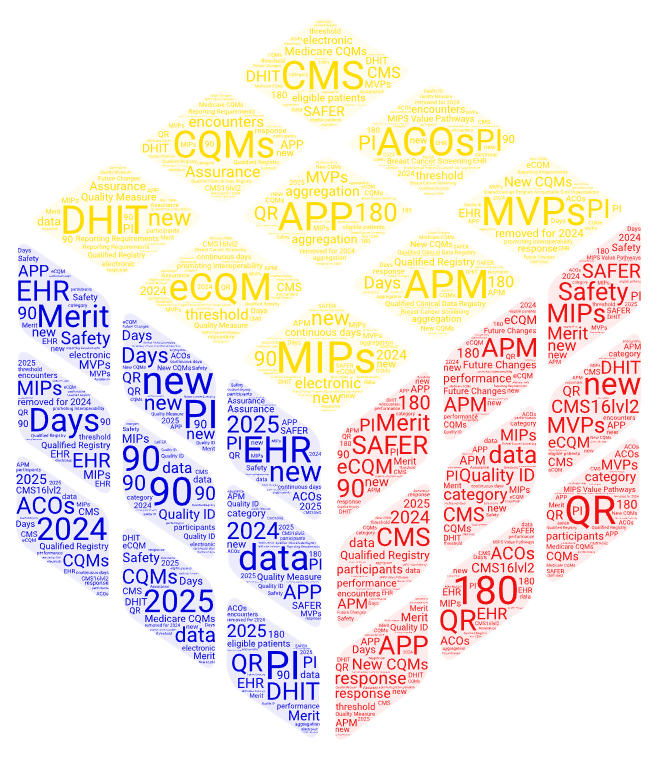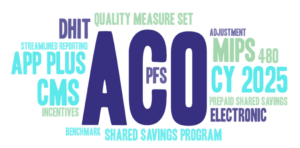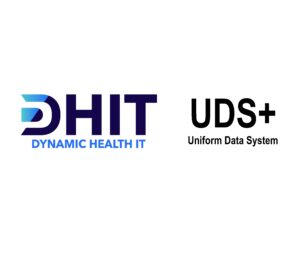For 2024, CMS has rolled out evolutionary rather than revolutionary changes to MIPS. One area of emphasis has been the development and maintenance of Merit-based Incentive Payment System (MIPS) Value Pathways (MVPs). As a Qualified Registry for MIPS and purveyor of Quality Measure software, we’ll focus on relevant changes in those areas but also survey other changes.
Overview of 2024 MIPS Changes
- Data completeness threshold increased from 70% to 75%. This means that MIPS participants must report Clinical Quality Measures (CQMs) for 75% of the eligible patients/encounters for the 2024 reporting year.
- New CQMs have been added and some sunsetted. More on that, below.
- For the 2024 performance period, Promoting Interoperability (PI) Category increases from a minimum of 90 continuous days to a minimum of 180 continuous days within the calendar year.
- Safety Assurance Factors for EHR Resilience (SAFER) Guides Measure – A “yes” response is now required to fulfill the SAFER Guide measure.
- There are five new MIPS Value Pathways (MVPs) for 2024, raising the total to 16. MVPs are bundles of CQMs selected for relevance to particular medical specialties.
- APM Performance Pathway (APP) Reporting Requirements have been adjusted to address data aggregation and patient matching issues for Shared Savings Program Accountable Care Organizations (ACOs).
Electronic Quality Measure Changes (eCQM)
There are a total of 46 Electronic Clinical Quality Measures (eCQMs) for the 2024 performance period, including two new eCQMS.
There are 11 new MIPS quality measures:
| Quality ID | Description |
| 495 | Ambulatory Palliative Care Patients’ Experience of Feeling Heard and Understood |
| 496 | Cardiovascular Disease (CVD) Risk Assessment Measure – Proportion of Pregnant/Postpartum Patients that Receive CVD Risk Assessment with a Standardized Instrument |
| 497 | Preventive Care and Wellness (composite) |
| 498 | Patients Over 18 screened for health-related social needs |
| 499 | Appropriate Screening and Plan of Care for Elevated Intraocular Pressure Following Intravitreal or Periocular Steroid Therapy |
| 500 | Acute Posterior Vitreous Detachment and Acute Vitreous Hemorrhage Appropriate Examination and Follow-up within 8 weeks |
| 501 | Acute Posterior Vitreous Detachment and Acute Vitreous Hemorrhage Appropriate Examination and Follow-up within 2 weeks |
| 502 | Improvement or Maintenance of Functioning for Individuals with a Mental and/or Substance Use Disorder |
| 503 | Gains in Patient Activation Measure (PAM®) Scores at 12 Months |
| 504 | Initiation, Review, And/Or Update To Suicide Safety Plan For Individuals With Suicidal Thoughts, Behavior, Or Suicide Risk |
| 505 | Reduction in Suicidal Ideation or Behavior Symptoms |
The following MIPS CQMs and eCQMs have been removed for 2024 reporting:
| Quality ID | Measure Description |
| 14 | Age-Related Macular Degeneration (AMD): Dilated Macular Examination |
| 93 | Acute Otitis Externa (AOE): Systemic Antimicrobial Therapy – Avoidance of Inappropriate Use |
| 107 | (CMS161v12) Adult Major Depressive Disorder (MDD): Suicide Risk Assessment 🡸eCQM |
| 110 | (CMS147v13) Preventive Care and Screening: Influenza Immunization 🡸eCQM |
| 111 | (CMS127v12) Pneumococcal Vaccination Status for Older Adults 🡸eCQM |
| 138 | Melanoma: Coordination of Care |
| 147 | Nuclear Medicine: Correlation with Existing Imaging Studies for All Patients Undergoing Bone Scintigraphy |
| 283 | Dementia Associated Behavioral and Psychiatric Symptoms Screening and Management |
| 324 | Cardiac Stress Imaging Not Meeting Appropriate Use Criteria: Testing in Asymptomatic, Low-Risk Patients |
| 391 | Follow-Up After Hospitalization for Mental Illness (FUH) |
| 402 | Tobacco Use and Help with Quitting Among Adolescents |
These three CQMs have been removed from traditional MIPS but are still available for MVP reporting:
- #112: Breast Cancer Screening (also still available for ACOs via Web Interface)
- #113: Colorectal Cancer Screening (also still available for ACOs via Web Interface)
- #128: Preventive Care and Screening: Body Mass Index (BMI) Screening and Follow-up Plan
It is important to note that the definitions of many other CQMs – both eCQMs and MIPS measures – have also been updated for 2024. DHIT’s CQMsolution® customers are able to easily swap out measures. Also, we always support all eCQMs for hospital and ambulatory reporting.
MIPS Value Pathways (MVPs)
DHIT is actively preparing for MVPs. We urge all vendors to connect with their physician practices to educate and prepare for the 2025 MVP requirements. The roadmap for DHIT’s support of all 16 MVPs is color-coded by quarter, driven by client demand.
| Rehabilitative Support for Musculoskeletal Care | Advancing Cancer Care* | Quality Care in Mental Health and Substance Use Disorders | Adopting Best Practices and Promoting Patient Safety within Emergency Medicine* |
| Value in Primary Care* | Prevention and Treatment of Infectious Disorders Including Hepatitis C and HIV | Improving Care for Lower Extremity Joint Repair* | Coordinating Stroke Care to Promote Prevention and Cultivate Positive Outcomes* |
| Optimal Care for Kidney Health* | Advancing Care for Heart Disease* | Quality Care for the Treatment of Ear, Nose, and Throat Disorders | Advancing Rheumatology Patient Care* |
| Optimal Care for Patients with Episodic Neurological Conditions* | Patient Safety and Support of Positive Experiences with Anesthesia* | Focusing on Women’s Health | Supportive Care for Neurodegenerative Conditions* |

*Modifications were made to the previously finalized MVPs
Note: The Promoting Wellness MVP and the Optimizing Chronic Disease Management MVP are combined into one MVP called Value in Primary Care.
APM Performance Pathway (APP) Reporting Requirements
Medicare CQMs
CMS has created a new collection type specifically for ACOs called “Medicare CQMs”. Medicare CQMS can only be reported under the APP and are intended to address the data aggregation and patient matching issues Shared Savings Program ACOs may experience when reporting eCQMs and MIPS CQMs under the APP. For the Medicare CQM collection type, an ACO that participates in the Shared Savings Program can limit CQM reporting to the ACO’s Medicare fee-for-service beneficiaries rather than all patients with all types of payers within its patient population. CMS will share a list of patients eligible for Medicare CQMs with each ACO on a quarterly basis. The intent is to reduce the reporting burden for ACO’s.
Implementation Challenges and Solutions
Multiple data sources can be used to compile measure data, including EHRs, paper records, registries, and patient management systems. For a large ACO with diverse EHR platforms, Medicare CQM reporting will still be challenging. In the meantime, DHIT’s CQMsolution product can consume QRDA I XMLs from diverse EHR platforms, de-duplicate patient data, calculate CQMs, and output aggregated data. Ultimately, we feel that FHIR will be an integral part of a long-term solution to this challenge. Stay tuned for our FHIR Connectathon blog recapping our work with FHIR measures.
Looking Ahead: Future Changes
The 2024 performance period will be the final performance year in the CMS Web Interface will be an available collection type for Shared Savings Program ACOs reporting quality measures under the APP. Beginning in 2025, ACOs must report either eCQMs, MIPS CQMs, and/or the new Medicare CQMs (see above).
Beginning with the 2025 reporting period, CMS will eliminate the health IT vendor category of third-party intermediaries. Unless vendors self-nominate to become a Qualified Clinical Data Registry (QCDR) or Qualified Registry and are approved by CMS, they will no longer be able to submit data on behalf of clinicians.
How Dynamic Health IT Can Help
If you’ve made it to the end of this blog, you know that quality measure reporting is always a moving target. Partner with DHIT to transform your CQM reporting from a complex burden into a painless process.
Resource: PFS Federal Register




